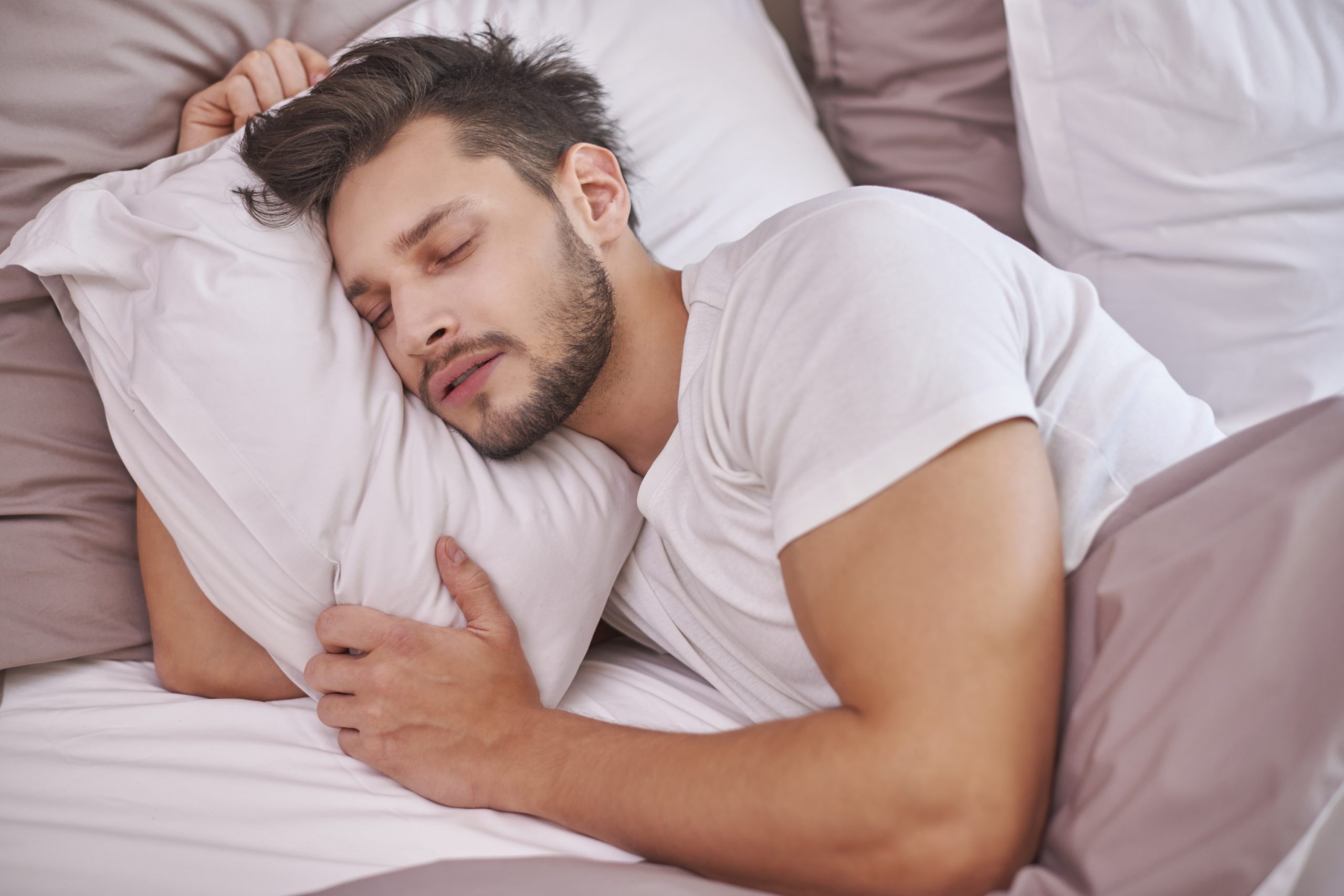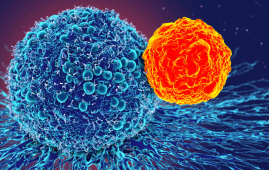

The prevalence of sleep disorders, such as sleep apnea, is increasing in the United States, yet current techniques for conducting clinically acceptable tests are costly and burdensome.
Researchers at Georgia Tech have developed a wearable gadget that can precisely assess obstructive sleep apnea (when the body repeatedly pauses and restarts breathing for a period of time) as well as the quality of sleep people obtain when they are sleeping.
People suspected of having a sleep problem or disorder must travel to a medical facility and be observed overnight while linked to a set of hooked probes that record brain, ocular, and muscle activity.
The silicone patch developed by a team of researchers and clinicians led by W. Hong Yeo, an associate professor and Woodruff Faculty Fellow in Georgia Tech’s George W. Woodruff School of Mechanical Engineering, fits over the forehead and has a second, smaller silicone attachment that molds to the chin.
“A lot of people have this disorder, but they don’t know it because it’s very hard to diagnose right now,” Yeo said. “Current smartphone apps don’t capture the specific data doctors and clinicians study to determine if a patient has apnea, rendering them useless.”
Because of technological limitations, traditional conventional sleep testing is still being performed in sleep labs. This at-home wearable device could be a less expensive alternative to more expensive medical procedures performed in sleep labs.
In May, Yeo and his team published their findings in Science Advances, which included researchers from Georgia Tech, Emory University School of Medicine, the University of Texas at Austin, the Icahn School of Medicine at Mount Sinai in New York, the Korea Institute of Materials Science, and the Korea Advanced Institute of Science and Technology.
Increasing Prevalence
While there are two other types of sleep apnea—central and complex—obstructive sleep apnea is the most common, according to Yeo, and is characterized by waking up suddenly, gasping for air or choking, and high blood pressure in addition to snoring and arrested breathing episodes.
According to Yeo, a lack of sufficient sleep might exacerbate other health difficulties in persons who already have heart disease or diabetes. Even those who do not have any other health problems might suffer major issues from sleep apnea since the longer it goes unnoticed and untreated, the more it affects their hearts and brains over time.
Yeo set out to take his wearable device research to the business with a wireless sleep monitoring patch system after seeing the toll sleep apnea was taking on the American population.
The patches are the thickness of an adhesive bandage and have an accuracy rate of 88.5% for detecting sleep apnea. Three embedded electronic sensors use Bluetooth to transfer signals wirelessly to record brain, eye, and muscle activity. This information is sent to an app on a smart device, such as a phone or tablet, for additional analysis and review.
The device can be used at home, eliminating the requirement for nighttime monitoring in a sleep center or medical facility.
“A lot of people have this type of sleep disorder; they just don’t know it,” said Yeo, whose research is centered primarily in advancing healthcare through the development of biosensors and bioelectronics. “In the U.S., more than 18 million people have this type of sleep apnea. That’s basically one out of every 15 Americans, and those numbers are increasing over time.”
Underlying health conditions are partly to blame, he says, but the modern American diet’s food variety and quantity sizes, as well as stress, are important causes.
There is also a financial cost to the country. In 2015, poor sleep cost the US economy $411 billion in lost productivity. By 2030, this sum is expected to climb $467 billion.
Identifying Sleep Apnea
The technology underlying the wearable device gathers data using artificial intelligence and machine learning to provide a sleep score that evaluates whether the user has sleep apnea or if they are receiving enough quality sleep.
In the study, Yeo’s wireless patch detected sleep apnea with an accuracy rate of 88.5% when compared to a controlled group of eight sleep apnea patients whose concerns were detected using standard testing methods. In comparison, an existing market headband gadget has an accuracy rate of roughly 71% and cannot assess muscle activity.
Furthermore, the technology built by Yeo and his team, as well as the machine learning algorithms used, can forecast the possibility that a person who has no symptoms of sleep apnea would get it at some point.
“By looking at the data, we can say that, if you don’t change something right now—whether it’s diet or sleeping behavior or anything like that—you’re likely to develop sleep apnea because your numbers are bad,” he said.
Putting a Problem to Rest
The wireless patch addresses current patient difficulties with comfort, time, access, and cost, posing a multifaceted challenge to standard testing methodology.
The current procedure, known as a PSG or polysomnography examination, causes discomfort in some people. This is due to the fact that they must sleep in a specific position for fear of detaching any of the 15 connected probes from their skin. If any of those sensors were to detach from their bodies, they would risk not obtaining enough data for adequate assessments.
It also takes time because the patient must go to a sleep center and spend the night under medical supervision. There may also be a lag in getting tested. Patients who do not have significant symptoms or other high-risk underlying problems such as heart disease or hypertension may have to wait for a bed at a sleep center, pending availability, after receiving a referral from a doctor. Finally, the existing detection method is expensive for patients and insurance companies, costing around $8,000 per person, per night.
“So that testing barrier is really high for regular people unless you are already sick, then they will screen you to avoid any severe conditions,” Yeo said. “But for people who don’t show symptoms, you won’t know whether you have the sleep disorder until it gets severe. We want to stop sleep apnea before it starts.”
more recommended stories
 T-bet and the Genetic Control of Memory B Cell Differentiation
T-bet and the Genetic Control of Memory B Cell DifferentiationIn a major advancement in immunology,.
 Ultra-Processed Foods May Harm Brain Health in Children
Ultra-Processed Foods May Harm Brain Health in ChildrenUltra-Processed Foods Linked to Cognitive and.
 Parkinson’s Disease Care Advances with Weekly Injectable
Parkinson’s Disease Care Advances with Weekly InjectableA new weekly injectable formulation of.
 Brain’s Biological Age Emerges as Key Health Risk Indicator
Brain’s Biological Age Emerges as Key Health Risk IndicatorClinical Significance of Brain Age in.
 Children’s Health in the United States is Declining!
Children’s Health in the United States is Declining!Summary: A comprehensive analysis of U.S..
 Autoimmune Disorders: ADA2 as a Therapeutic Target
Autoimmune Disorders: ADA2 as a Therapeutic TargetAdenosine deaminase 2 (ADA2) has emerged.
 Is Prediabetes Reversible through Exercise?
Is Prediabetes Reversible through Exercise?150 Minutes of Weekly Exercise May.
 New Blood Cancer Model Unveils Drug Resistance
New Blood Cancer Model Unveils Drug ResistanceNew Lab Model Reveals Gene Mutation.
 Healthy Habits Slash Diverticulitis Risk in Half: Clinical Insights
Healthy Habits Slash Diverticulitis Risk in Half: Clinical InsightsHealthy Habits Slash Diverticulitis Risk in.
 Caffeine and SIDS: A New Prevention Theory
Caffeine and SIDS: A New Prevention TheoryFor the first time in decades,.

Leave a Comment